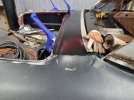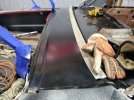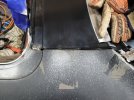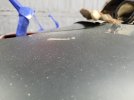RosharonRooster
Promoted Users
Looking for advice on the best way to prep this before bodywork stage and what products to use?
It's a reproduction quarter panel and a reproduction center deck lid filler panel. The 2 sections are spot welded underneath. They are in ecoat. But I will be taking it all off and using epoxy. Should I be putting any type of seam sealer down in there or use any type of filler? What about mig welding the seam up? Will i ghost back after paint?.
Thank you
It's a reproduction quarter panel and a reproduction center deck lid filler panel. The 2 sections are spot welded underneath. They are in ecoat. But I will be taking it all off and using epoxy. Should I be putting any type of seam sealer down in there or use any type of filler? What about mig welding the seam up? Will i ghost back after paint?.
Thank you




